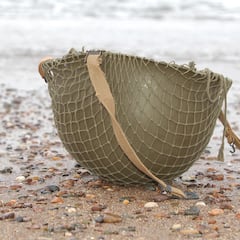June 6 is the 81st anniversary of the pivotal Second World War engagement between the Allies and the Germans in Northern Europe, opening the way to France.

D-Day by the numbers: The strategy, troops and impact of Operation Overlord

D-Day stands as the largest amphibious assault in history. Over 150,000 Allied troops, primarily from the United States, Britain, and Canada, stormed the beaches of Normandy. This represented just the initial wave of a much larger operation. In total, Operation Overlord involved a staggering 2 million troops from a dozen Allied nations.
The sheer scale of the invasion required an incredible amount of logistical support. Nearly 7,000 naval vessels, including battleships, landing craft, and destroyers, participated in the operation. Allied airpower was also crucial, with over 11,000 aircraft providing cover and support for the ground troops. By this stage of the war, the German Luftwaffe had been decimated in the east and could offer token resistance.
A costly victory
D-Day came at a heavy price. According to the Commonwealth War Graves Commission, the allies suffered 10,250 casualties. This included over 4,400 Allied soldiers killed on the beaches, with more than 5,000 wounded.
The ensuing Battle of Normandy was a brutal slog, resulting in an estimated 73,000 Allied deaths and 153,000 wounded. French civilians also suffered, with around 20,000 estimated to have perished.
German casualties are less precise, but estimates range from 4,000 to 9,000 dead, wounded, or missing on D-Day alone, with total German losses in the battle reaching around 22,000. The biggest German casualty on the Battle of Normandy was surrender, with nearly a quarter of a million surrendering by August 1944.
A turning tide
Related stories
Despite the immense cost, the liberation of Normandy proved to be a turning point in the war. D-Day opened a western front, forcing Nazi Germany to fight a three-front war (including the Eastern and Italian fronts) and ultimately contributing to their defeat.
The courage and sacrifice of the Allied forces on D-Day stands as a testament to the fight for freedom that ultimately led to victory in the Second World War.


Complete your personal details to comment